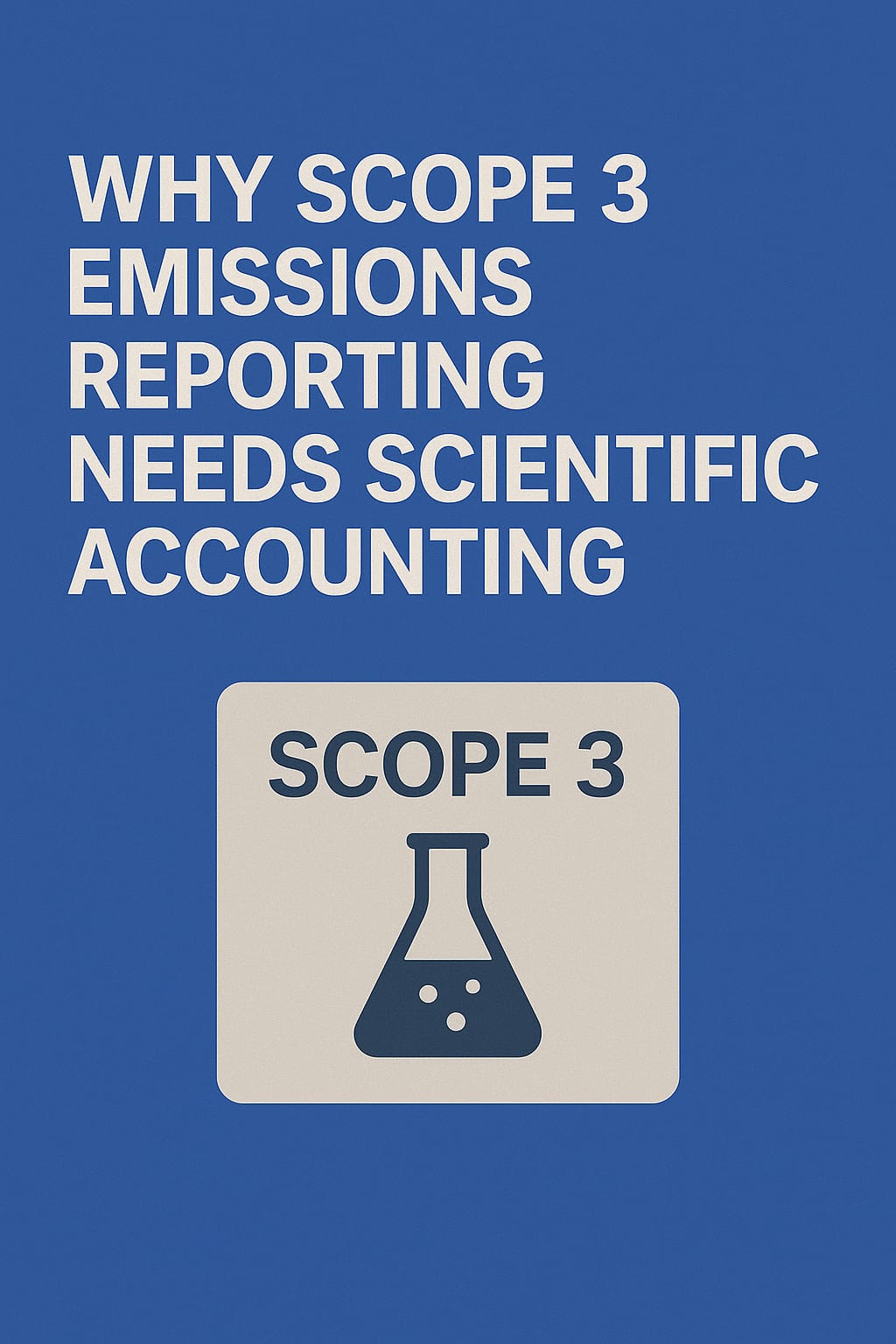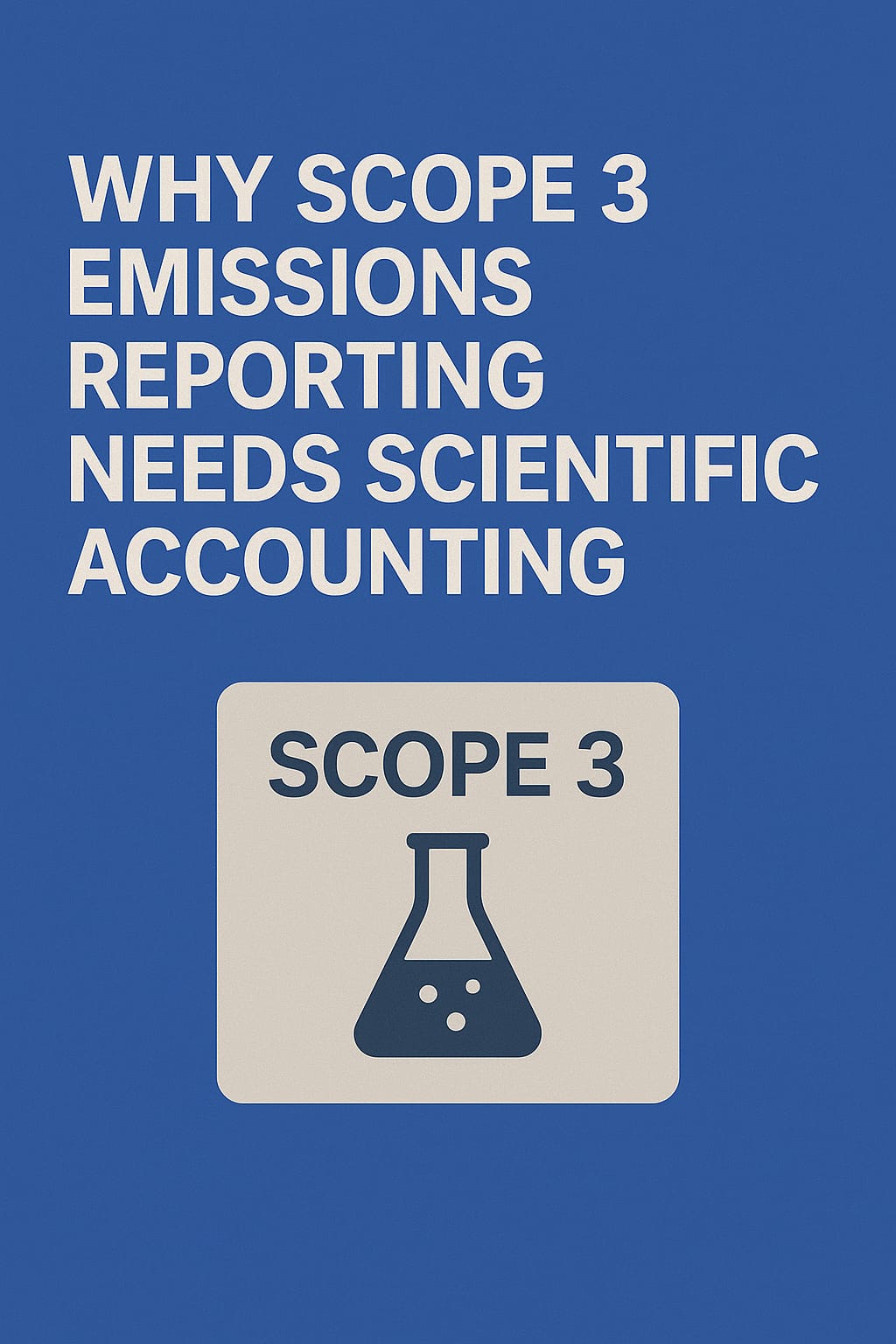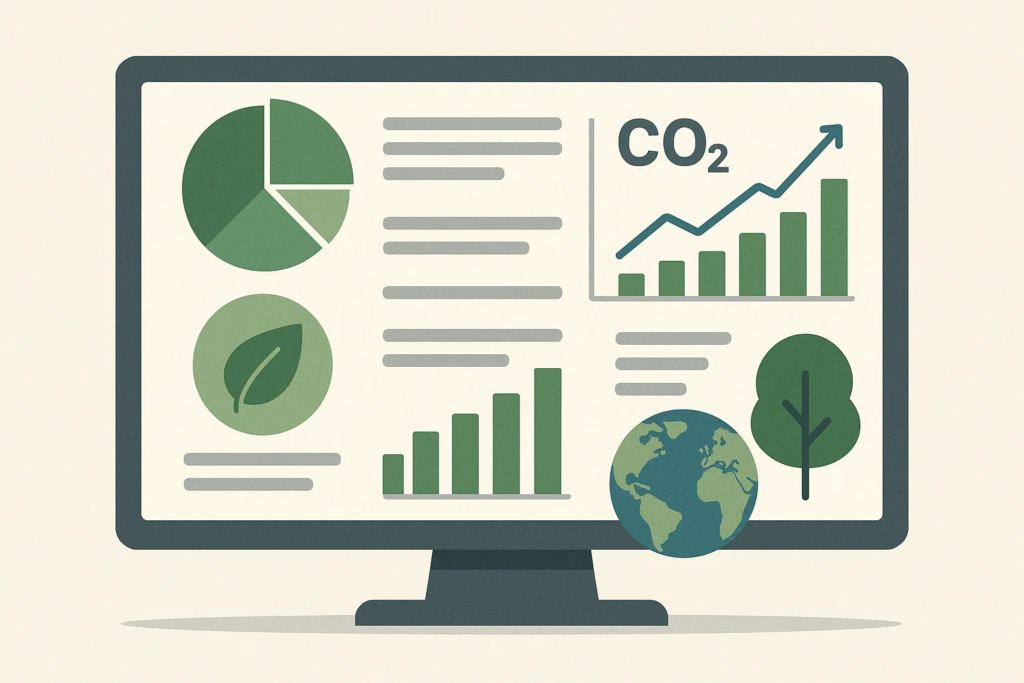Why Scope 3 Emissions Reporting Needs Scientific Accounting
Introduction
Scope 3 emissions, indirect emissions from a company’s value chain, can represent over 70% of total emissions. Accurate scope 3 emissions reporting is impossible without scientific carbon accounting and robust GHG emissions data. As ESG regulations tighten and investors demand transparency, companies that fail to properly assess and disclose these emissions risk falling behind. This article delves into the methods, challenges, tools, and benefits of tackling Scope 3 emissions with scientific accuracy.
Understanding Scope 3 Emissions
Scope 3 emissions, as defined by the Greenhouse Gas Protocol, are all indirect emissions not included in Scope 1 (direct emissions from owned sources) or Scope 2 (purchased electricity). These include:
- Upstream emissions: From purchased goods, services, capital goods, and employee commuting
- Downstream emissions: Resulting from product use, disposal, leased assets, and investments
These emissions are typically outside a company’s direct control but are vital to its total carbon footprint tracking. Accurately accounting for Scope 3 is a major task but essential for achieving genuine net-zero goals.
Examples:
- A clothing brand’s emissions from cotton farming and textile mills
- A tech company’s emissions from customer use of devices over their lifetime
- Logistics emissions from third-party shipping partners
Because of their distributed and complex nature, Scope 3 emissions are often the most difficult to quantify accurately, yet they account for the majority of corporate carbon footprints.
Even service-based businesses like SaaS or fintech firms must account for indirect impacts, such as data center usage, partner APIs, or cloud services, all of which fall under Scope 3.
Why Scientific Carbon Accounting Is Essential for Scope 3 Emissions
A Rigorous Approach to Carbon Disclosure
Scientific carbon accounting uses quantitative methods, lifecycle emissions analysis, and scientific modeling to calculate emissions with precision.
What sets it apart?
- Granular data collection: Going beyond average emissions factors to supplier-specific and process-level data
- Standardized metrics: Enables benchmarking across industry peers
- Scenario-based forecasting: Helps align with long-term sustainability targets
It’s about moving from estimates to evidence, transforming ESG from a checkbox into a core business metric.
ALSO READ : Product Managers: Master Carbon Accounting with These Proven Engagement Strategies
Holistic Decision-Making
With reliable Scope 3 data, organizations can:
- Pinpoint carbon-intensive suppliers
- Make design changes that reduce lifecycle emissions
- Evaluate acquisition targets based on environmental performance
This turns sustainability into a strategic asset, not just a compliance task.
Lifecycle Emissions Analysis (LCA): A Deep Dive
Lifecycle analysis is crucial for understanding Scope 3. It evaluates emissions at every stage:
- Cradle-to-Gate: From raw material extraction to the factory door
- Gate-to-Grave: Includes use and disposal
- Cradle-to-Cradle: For recyclable, circular-economy models
Business Impact:
- Redesigning packaging for lighter transport loads
- Extending product lifespans through durability initiatives
- Transitioning from linear to circular supply chains
Some companies even use LCAs to inform marketing and pricing strategies, emphasizing sustainability as a product value proposition.
Key Tools for Accurate Reporting of Scope 3 emissions
- ESG Data Platforms: Tools like Watershed, Net0, and Normative automate data gathering and visualization
- Carbon Accounting Software: Platforms such as Persefoni and Emitwise integrate with ERP systems and offer audit-ready reports
- Survey-Based Tools: Help gather emissions data from suppliers lacking digital infrastructure
- Blockchain-Ledgers: Create immutable records of emissions data for auditing and traceability
These solutions support reporting in compliance with frameworks like CDP, TCFD, and the EU CSRD. Their role is becoming increasingly critical as regulators demand more accuracy.
Supply Chain Collaboration: The Make-or-Break Factor
Scope 3 emissions can’t be measured in isolation. Companies must engage their vendors, logistics partners, and downstream stakeholders.
Strategies for Success:
- Conduct supplier emissions surveys
- Offer access to carbon tracking software and training
- Share emissions data in procurement portals
- Tie sustainability metrics to vendor contracts
Best Practice:
Some firms create supplier scorecards that include carbon KPIs, rewarding low-emission partners with preferred status or volume incentives.
This turns carbon performance into a competitive advantage across the supply chain.
Setting Science-Based Targets (SBTs)
Science-Based Targets align corporate goals with the latest climate science. They require:
- Verified baseline emissions data
- Defined reduction pathways for Scope 1, 2, and 3
- Public disclosure of progress
Without comprehensive Scope 3 data, it’s impossible to set credible SBTs. Scientific carbon accounting fills this gap by ensuring that reduction targets are meaningful, measurable, and time-bound.
Industry Case Studies
Microsoft
By 2030, Microsoft aims to be carbon negative and has pledged to remove its historical carbon footprint by 2050. Its Scope 3 efforts span cloud computing energy use, customer electricity consumption, and supply chain transparency.
IKEA
By making LED lighting and flat-pack shipping more efficient, IKEA has lowered downstream emissions substantially. It also sources wood from certified forests to reduce upstream emissions.
Nestlé
Nestlé works directly with agricultural suppliers to track methane and fertilizer emissions, implementing data-driven solutions at the farm level.
These companies succeed by treating Scope 3 as a core performance metric, not a reporting burden.
Strategic Benefits Beyond Compliance
- Brand Differentiation: Authentic sustainability builds customer trust and loyalty
- Investor Confidence: ESG-conscious investors demand Scope 3 visibility
- Cost Efficiency: Emissions reduction often aligns with cost savings in materials, energy, and logistics
- Innovation: Drives breakthroughs in product design, sourcing, and packaging
- Innovation: Drives breakthroughs in product design, sourcing, and packaging
Addressing Scope 3 emissions enables companies to lead, not just follow, the green economy.
Common Reporting Mistakes to Avoid
- Using generic emissions factors without verification
- Ignoring end-of-life product disposal emissions
- Not accounting for subcontractors or temporary workers
- Failing to refresh data annually
- Treating Scope 3 as optional
Mistakes not only hurt ESG scores but can lead to investor backlash and regulatory scrutiny.
The Road Ahead: Scope 3 by 2030
As regulations tighten, Scope 3 will become legally enforceable:
- Carbon taxes may be calculated based on full supply chain footprints
- Mandatory disclosures will be enforced under EU and US laws
- Product labeling may require verified emissions data
Companies investing in scientific carbon accounting today will be prepared for tomorrow’s landscape.
Conclusion
Scope 3 emissions are complex but not impossible to tackle. With the right mix of scientific carbon accounting, supplier collaboration, and digital tools, companies can transform ESG from a cost center into a driver of value.
It’s no longer enough to track what’s easy. The future belongs to those who measure what matters.
CTA: Download our free whitepaper on lifecycle emissions tracking and discover how your organization can take its Scope 3 reporting to the next level.





